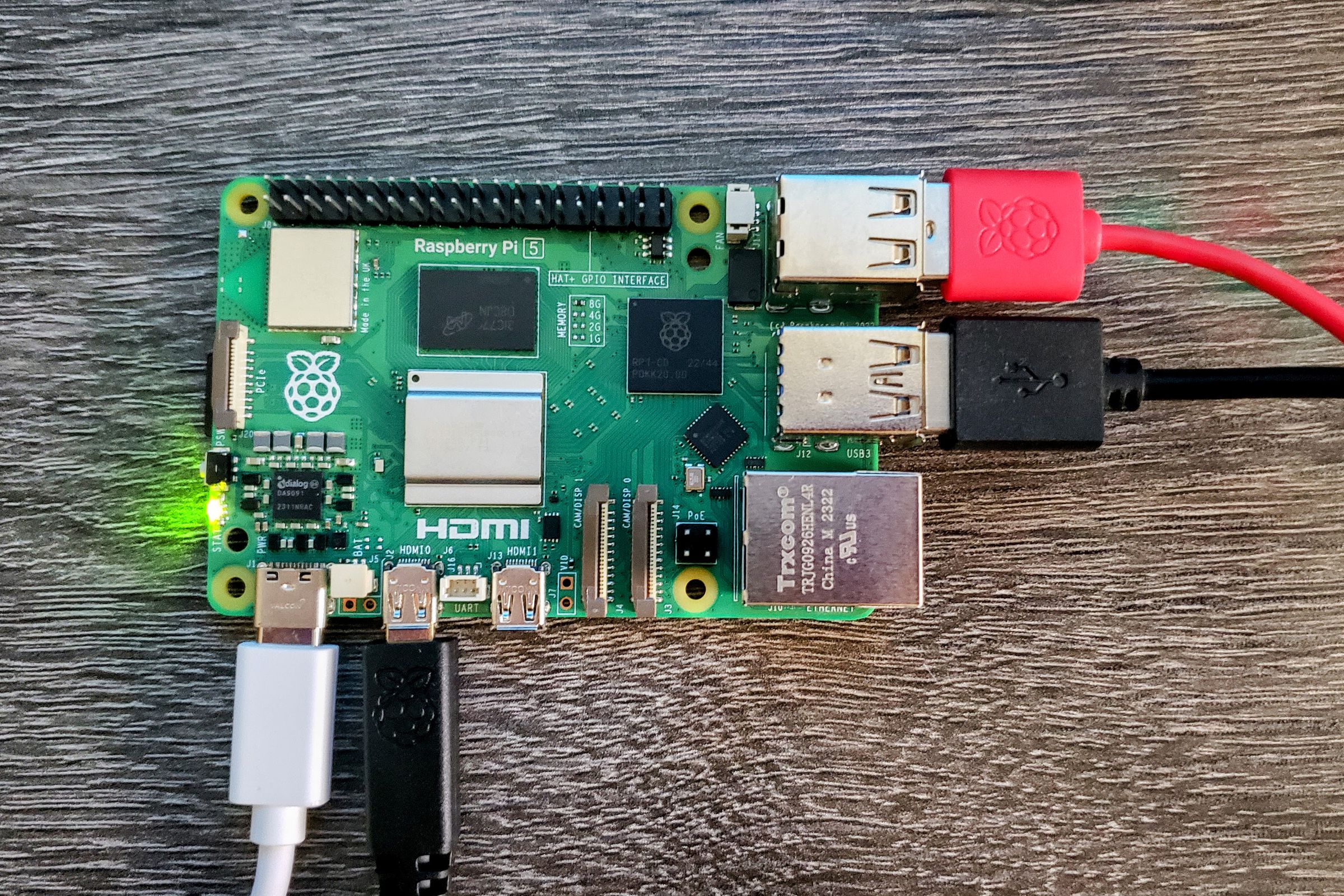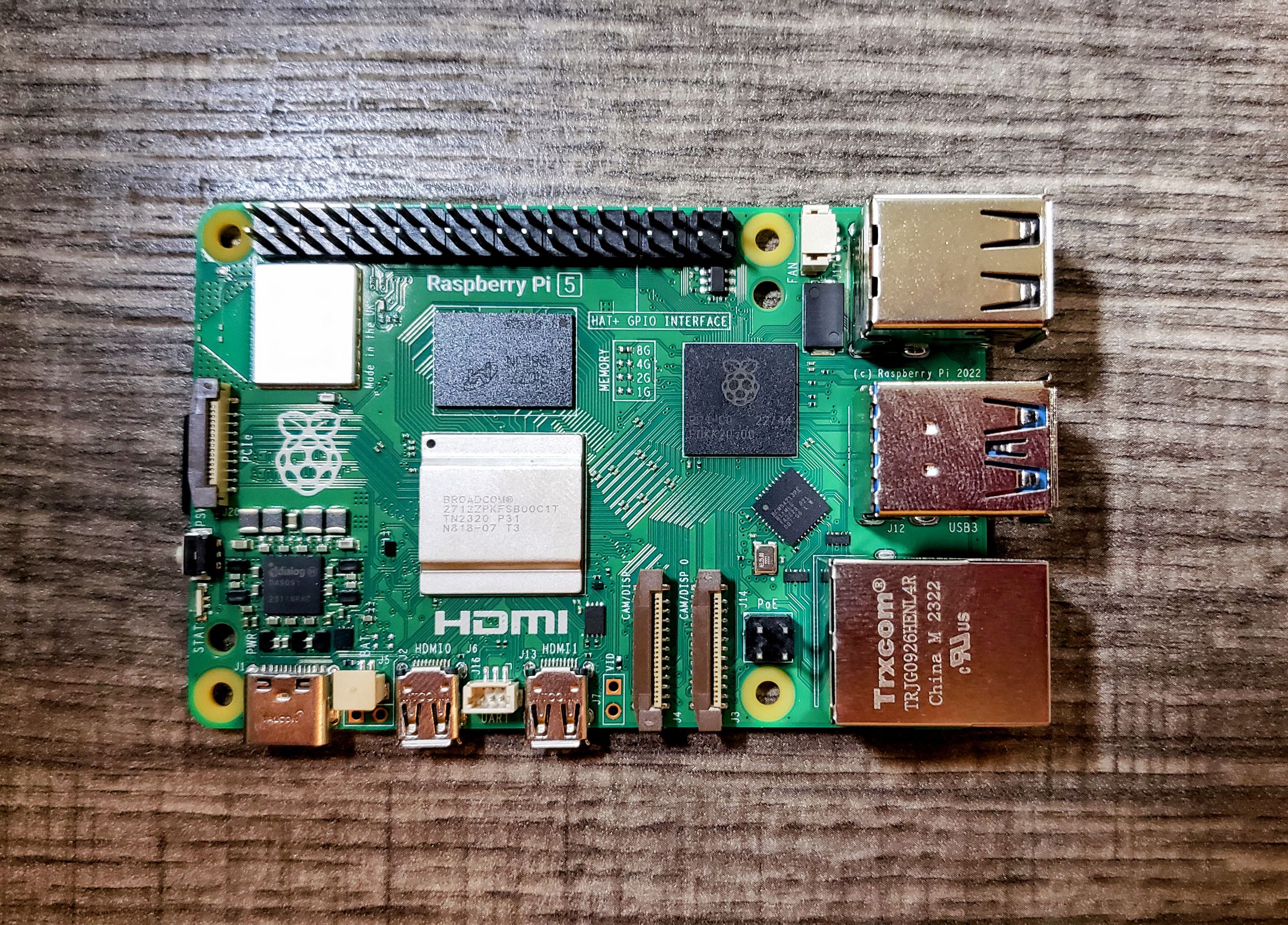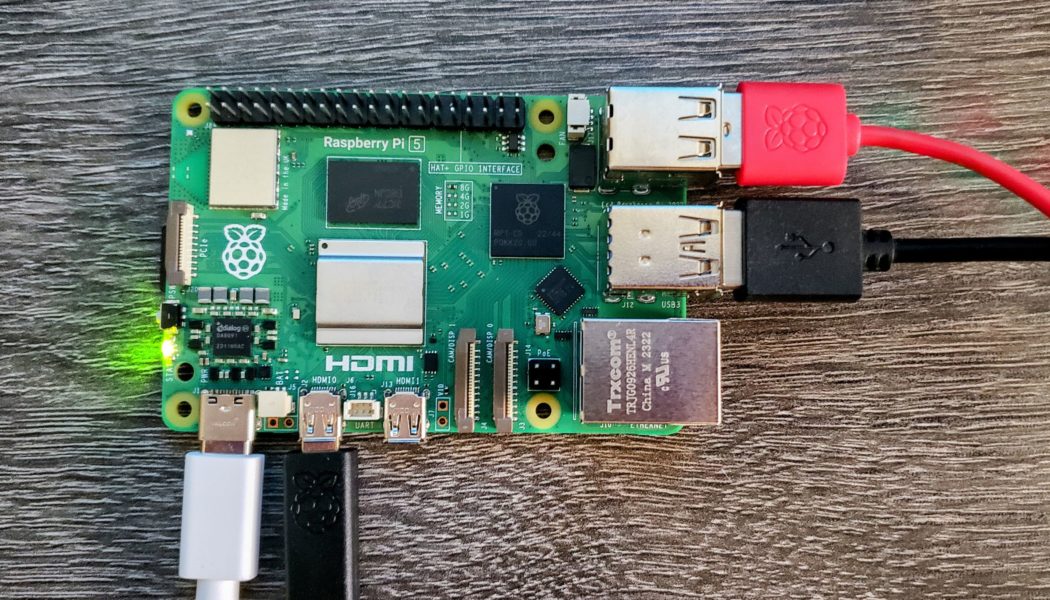Four years since the launch of the Raspberry Pi 4, the Raspberry Pi 5 has arrived with a performance boost and house silicon that adds support for PCIe 2.0.
Share this story

Despite doubts that the Raspberry Pi 5 would launch this year, the latest version of the microcomputer has arrived with some notable upgrades at a $60 starting price. Not only is it supposed to perform better than its predecessor, but it’s also the first Raspberry Pi to come with in-house silicon.
Powering the brain of the Raspberry Pi 5 is a 64-bit quad-core Arm Cortex-A76 processor that runs at 2.4GHz, allowing for a two to three times performance boost when compared to the four-year-old Raspberry Pi 4. The device also comes with an 800MHz VideoCore VII graphics chip that the Raspberry Pi Foundation says offers a “substantial uplift” in graphics performance.
I got to try out the device for myself. While I didn’t have time to do much tinkering with it, I found that it boots up pretty quickly, while also loading webpages fast when compared to my older Raspberry Pi 3 Model B+. It does get pretty hot, but luckily the Raspberry Pi sent over an active cooling component that I could mount directly on the board.


Additionally, the Raspberry Pi 5 features a component made by the Raspberry Pi Foundation for the first time: the southbridge, also known as a part of the motherboard that helps it communicate with peripherals. With the RP1 southbridge, the Raspberry Pi Foundation says the microcomputer “delivers a step change in peripheral performance and functionality,” enabling faster transfer speeds to external UAS drives and other peripherals.
It also opens up two four-lane 1.5Gbps MIPI transceivers that let you connect up to two cameras or displays. There’s also a new single-lane PCI Express 2.0 interface for the first time, offering support for “high-bandwidth peripherals.” However, the Raspberry Pi Foundation notes that you’ll still need a separate adapter, such as an M.2 HAT (Hardware Attached on Top) for you to take advantage of it.
In terms of ports, you can expect dual 4Kp60 HDMI display outputs with support for HDR, a microSD slot, two USB 3.0 ports, two USB 2.0 ports, Gigabit Ethernet, and a 5V DC power connection via USB-C. Some other nice-to-haves include support for Bluetooth 5.0 and Bluetooth Low Energy (LE) and peak SD card performance that’s “doubled” with the SDR104 high-speed mode. Together, all these upgrades make the Raspberry Pi 5 even more versatile, whether you’re using it as an ultra-budget desktop PC, a media server, or even a DIY security system.
The Raspberry Pi 5 will come with a couple of different RAM options at launch, costing $60 for the 4GB version and $80 for 8GB. That makes it slightly more expensive than the Raspberry Pi 4, which is priced at $55 for 4GB of RAM and $75 for 8GB. The Raspberry Pi 5 will be available to purchase before the end of October.









